What are the treatment options for Castleman disease?
Published Oct 13, 2021 • By Charlotte Avril
Castleman disease is a lymphoproliferative disorder, and its treatment strategy depends on its type.The complexity of this condition sometimes makes its diagnosis and care for patients difficult. Castleman disease is the focus of the ongoing active research, especially on the subject of its causes, which are still unknown.
If you wish, you can find detailed information about the ongoing research on Castleman disease in our article "Castleman disease - what is the current research?"
What are the different therapeutic approaches to the disease? How does the treatment differ depending on the type of the condition? How is Castleman disease treated?
We explain it all in our article!

Treatments for unicentric Castleman disease (UCD)
Surgery is the standard treatment, if it allows to completely remove the lesion. Complete recovery is practically certain, if the surgery allows the removal of the whole lymph node (adenopathy). The lymph node can be located in the neck, armpits or at the base of the leg. It can be large, it can bother, but it usually doesn't hurt.
If the surgery is not possible, the aim will be to reduce the tumor mass with the help of:
- Tumor embolization: it is a type of treatment that stops or reduces the bloodflow to certain tissues or organs. In this case it will be used to block the bloodflow going into the tumor, so that cancer cells would die.
- Debulking surgery (reduces the tumor by as much as possible) or one of the following treatments that aim at reducing the size of the tumor:
- Steroids
- Rituximab, tocilizumab, siltuximab: antibodies targeting IL-6 (see details below)
- Cyclophosphamide.
Following these shrinkage techniques, surgery may be reconsidered.
Localized radiation therapy can be an alternative to surgery. This solution is seldom used as the risk of short-term and long-term toxicity is not insignificant.
Observation and monitoring (with no treatment offered) can also be an option if the patient is asymptomatic or after a phase of tumor shrinkage.
No matter what treatment plan has been adopted, post treatment monitoring is always carried out via blood tests and medical imaging.
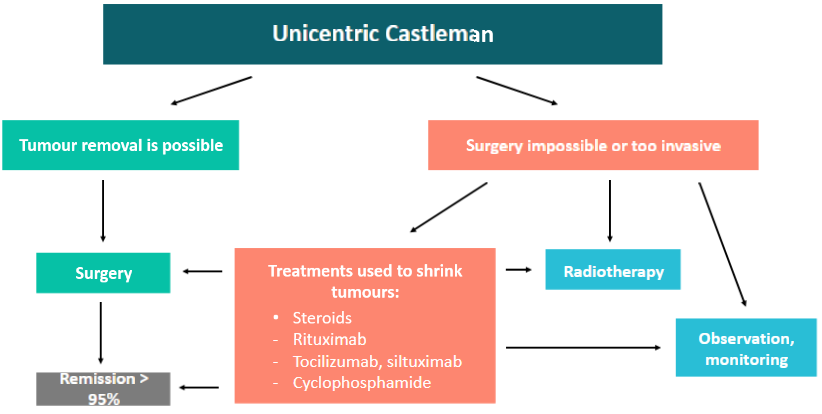
Treatments for idiopathic multicentric Castleman disease (iMCD)
The main targets for the therapeutic approach
As this form of Castleman disease affects multiple lymph nodes, surgery is not suitable, and it is all the more difficult to find appropriate treatment.
Various other therapeutic approaches are possible. Depending on the target for the adopted therapeutic approach, the aim will be to reduce the lymph node mass, treat the symptoms and try to control the disease as much as possible.
- Interleukine 6 (IL-6): it is the main target for the iMCD treatments. Since the discovery of Castleman disease, the research has shown the excessive functioning of IL-6. The majority of the symptoms of Castleman disease are linked to this excessive functioning of the affected lymph nodes, which allows to suggest that IL-6 plays a key role in the pathogenesis of idiopathic multicentric Castleman disease. They obstruct the signalling pathway of IL-6 and try to eliminate the disease trigger . IL-6 plays an important role in the defense system and is especially known as a fever mediator.
- Interleukine 1 beta (IL-1ꞵ): the signalisation of IL-1β contributes to growth and progression of tumors via activation of multiple transcription factors. By blocking IL1ꞵ, we encourage the creation of the immune response against the tumor.
- Proinflammatory cytokines: they are responsible for inflammation. If their signals are inhibited, the inflammatory syndrome reduces.
- VEGF: it plays a role in tumors' growth. Its suppression allows to stop tumor growth.
- m-TOR: the enzyme that controls cell growth. Its inhibition allows to reduce cell growth.
- T-lymphocytes: these are white blood cells (leukocytes) which play a role in the organism's defense system against infections. In case of Castleman disease the increase of IL-6 linked to T-lymphocytes stimulation was observed.
- Steroids: they play a role in controlling the inflammatory syndrome.
First-line treatments
Second-line treatments
Here are considered the immunosuppressants / immunomodulators or chemotherapy:
Other treatments
Steroids are also indicated for controlling inflammatory syndrome, in case of associated complication or in combination with another treatment. The usual dose is 1mg/kg, but higher doses are possible.
Treatments for HHV8 associated multicentric Castleman disease (Kaposi Sarcoma), non-related to HIV infection
Kaposi sarcoma is a tumor combined with human herpes virus type 8 infection (HHV8). It particularly develops in patients infected by HIV and HHV8. The AIDS epidemics caused the explosion in the number of cases of Kaposi sarcoma. You will find more information in our article “Castleman disease and HIV: a focused look at the HHV-8 virus".
Steroids are to be avoided due to the risk of apparition or aggravation of Kaposi disease, even though they are capable of improving the situation for several days.
In case of treatment failure, other chemotherapy drugs can be suggested, possibly associated with rituximab in the absence of progressive Kaposi disease.
Other options, like thalidomide, bortezomib or interferon α seem only to be leading to low remission rates.
Treatments for HHV8 and HIV associated multicentric Castleman disease
The treatment is based on the same scheme, but the need to control viral replication and the severity of the immune deficiency in patients affected with HIV must be taken into account. Etoposide is the standard treatment in case of emergency or initiation.
Depending on whether HIV is controlled or not, the care plan will be different. To learn more about the therapeutic approach in case of co-infection with HHV8/HIV, take a look at our article "Castleman disease and HIV: a focused look on the HHV-8 virus".
For more information:
Don't hesitate to visit the CDCN (Castleman Disease Collaborative Network) website for more information.
You can also join the Castleman disease community on Carenity to be able to share your experience, find support and exchange information with other patients or carers.
If you'd like your voice to be heard, let us know! You can share your experience about living with Castleman disease (diagnosis, care pathway, etc) with our members.
Would you like to share your experience? Email us at: contact@carenity.com
Give it a like or share your thoughts and questions with the community in the comments below!
Take care!

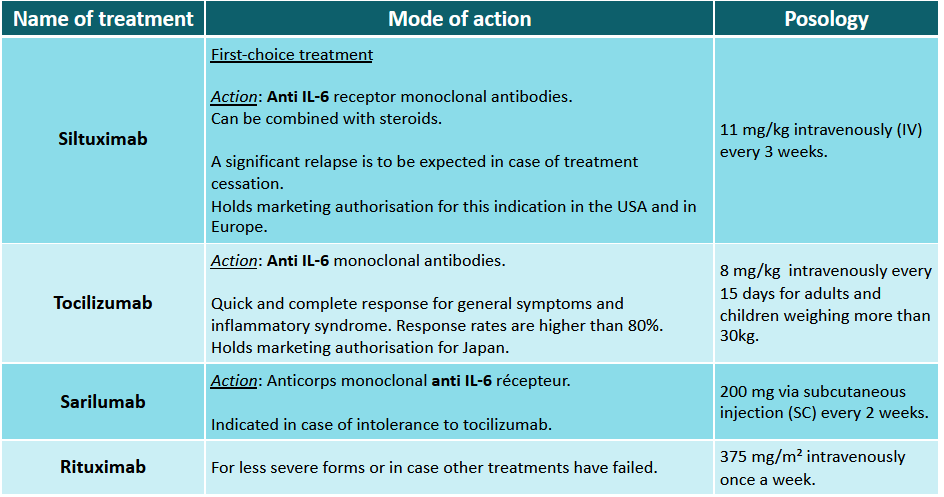
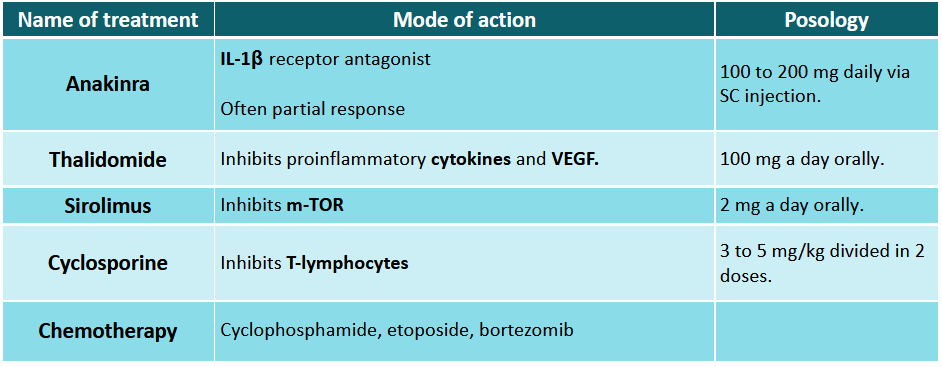
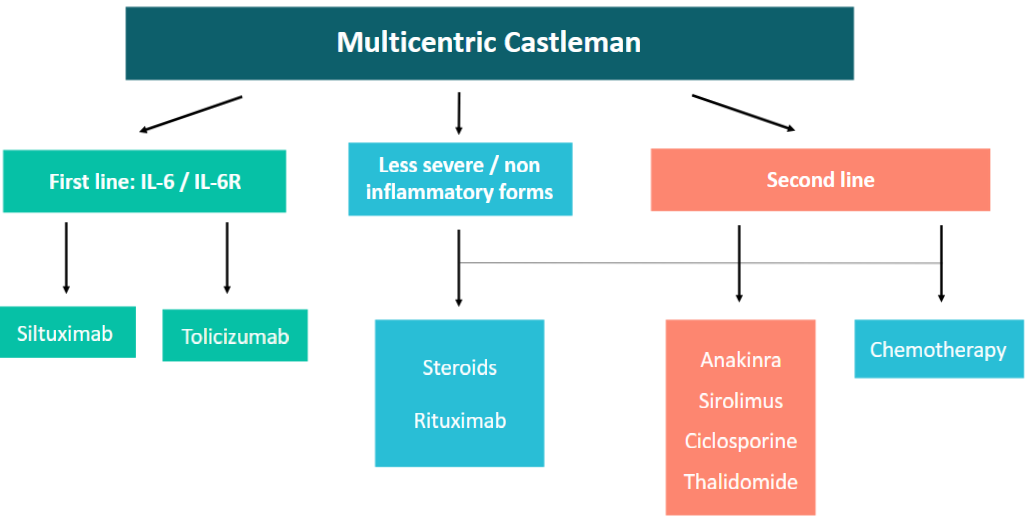
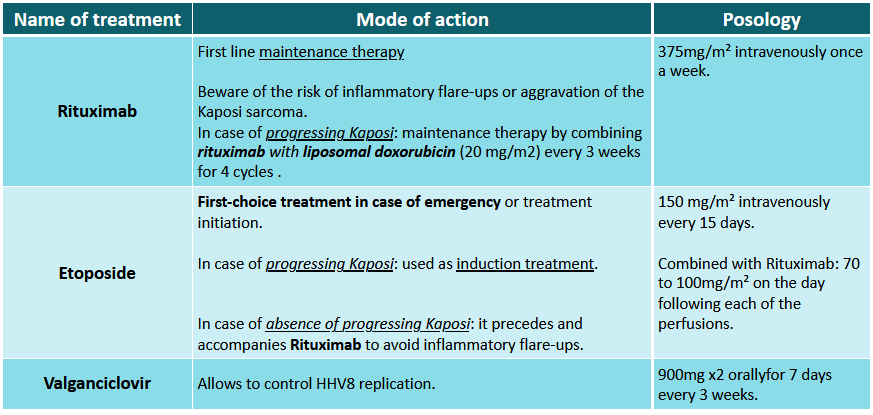
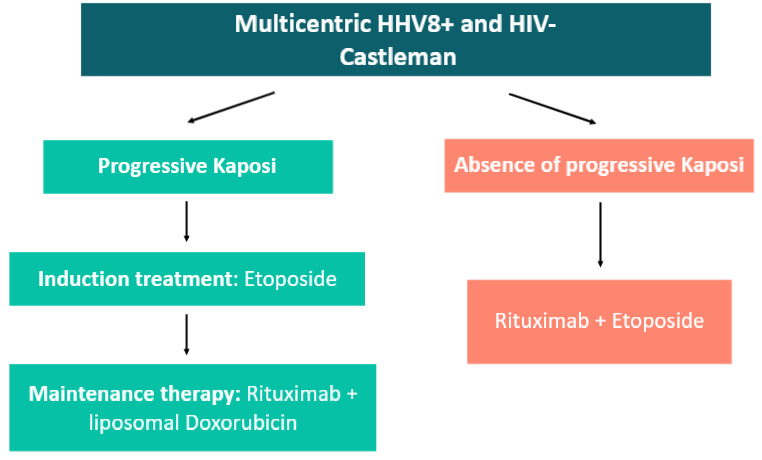
 Facebook
Facebook Twitter
Twitter

